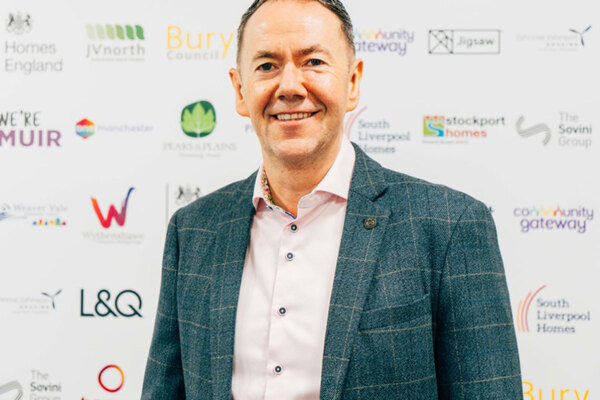 Campbell Robb
Campbell RobbBefore ...more
We need action on affordability
A dearth of affordable housing is having a knock-on negative impact on living standards, says Campbell Robb
 Campbell Robb
Campbell RobbBefore ...more
A toxic living standards storm is brewing. Since 2008, the Joseph Rowntree Foundation (JRF) has been tracking how living standards in the UK are holding up.
The Minimum Income Standards reports paint a picture of what’s been happening to family budgets since the crash, and this year shows that there are worrying times ahead.
Working with the Centre for Research in Social Policy at Loughborough University, we asked members of the public what is needed for a decent standard of living in the UK today.
It includes basic essentials like food, rent and energy, and covers what the general public says you need to have as an acceptable living standard – things like internet access or money for the kids to go on school trips.
Today, there are 19 million people in the UK who fall below this level, and this figure is set to rise. After a couple of years of the figures remaining relatively steady, the gap is widening dramatically, particularly for families with children. A family with two kids, one parent working full time on the National Living Wage and one who stays at home are £870 a year further away from being able to afford a decent living standard than they were last year.
This is happening despite welcome increases in the National Living Wage and tax cuts through the personal allowance. But inflation, rising costs and – crucially – the benefits freeze mean people are falling behind.
“[Falling living standards are] happening despite welcome increases in the National Living Wage.”
Our analysis has found that the benefit freeze has cost families £415 in the last year alone. With inflation forecast to keep rising, it’s going to become even more damaging to the budgets of low-income households.
Support for housing costs – theoretically pegged to the 30th percentile of local rents – has been frozen since 2015, having been uprated by just 1% per year before that.
As rents rise, the gap between Local Housing Allowance (LHA) rates and the amount that people really need to spend on renting a home is growing. This is particularly true in more expensive areas of the country, and is putting increasing numbers of people who rely on housing benefit in an untenable position.
For example, in outer London, the average shortfall between the current LHA and part of the market it is supposed to cover is £192 per month for a two-bedroom home. In inner London, this rises to £376 per month.
This is a huge shortfall which many people will simply be unable to make up, particularly at a time when the cost of other essentials is likely to keep rising faster than wages.
While the gap is widening, a lack of new social housing means that more people are being forced into the bottom end of the private rented sector where rents are more expensive, insecurity is higher and conditions are often worse.
Fixing this cannot be left to the market alone. A lack of supply and pinning affordable rents to the dysfunctional private rented sector has led to a dearth of homes that people on low incomes can afford to rent from their wages.
In the long term, this can only be tacked by government action to build new homes and a radical reform of the rents that people on lower incomes are charged for their homes.
“As rents rise, the gap between LHA rates and the amount that people need to spend on renting a home is growing.”
Shared equity and affordable homes to buy need to be part of a building programme, but the government must develop its commitment in the Housing White Paper to consider how it can do more to support people in rented homes. Shifting affordable rents from a percentage of private rents to JRF’s Living Rents model, which pins costs to local earnings to make sure homes are affordable to people on lower incomes.
The tragedy at Grenfell Tower has shocked us all and brought focus onto the safety and conditions of housing for people on lower incomes. It is a fact that social housing now reaches higher standards than other tenures, but we also know that people in poverty, wherever they live, are more likely to live in poor quality or unsafe housing.
That’s why we need to build more high quality affordable housing, and root out unsafe and dangerous property, particularly in the private rented sector where we know it is most prevalent.
More high quality, affordable homes and a new approach to social renting will help to control the cost of renting in the long term. But many people on low incomes need help now.
With the Bank of England forecasting inflation will rise even higher this year, families are facing difficult times. We urgently need the government to end the benefits freeze, including uprating housing benefits in line with local rents.
Campbell Robb, chief executive, Joseph Rowntree Foundation







